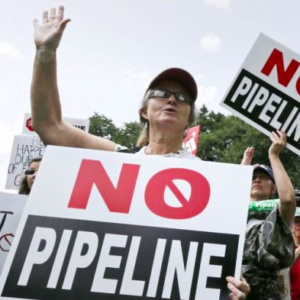Everything old is new again: The Biden administration reportedly will revoke the permit for the Keystone XL pipeline, opposed during the Obama years, favored during the Trump term, and now disfavored yet again. But one reality is eternal: The arguments against Keystone XL are as weak today as ever.
The all-purpose climate argument is the central focus: Keystone XL supposedly would worsen anthropogenic (manmade) climate change.
The pipeline would transport 830,000 barrels per day of Canadian crude oil, the total greenhouse gas emissions from which would be about 150 million metric tons per year, or about 0.3 percent of the world total. If we apply the EPA climate model using the least favorable set of assumptions, those emissions would have a global temperature effect of about four ten-thousandths of a degree Celsius by 2100. The impacts upon sea levels and other climate phenomena would be similarly undetectable; so much for the ubiquitous empty rhetoric about the “climate disaster” supposedly to be engendered by Keystone XL. Why do the opponents attempt to obscure this?
The opponents of the pipeline occasionally concede that, yes, the climate impacts of stopping Keystone XL would be very close to zero, but that many such actions globally would add up to something significant. Nope: The global climate effects of even large emissions cuts also would be very small. Net-zero emissions by the U.S.: 0.17° Celsius The entire Paris agreement: 0.17° Celsius. Net-zero emissions by the entire OECD: 0.35° Celsius. A 25 percent emissions reduction by the entire world: about 0.5° Celsius.
The opponents argue as well that the pipeline would create a danger of spills. But transport of oil by pipeline is substantially safer than transport by rail or truck, the real-world alternatives to Keystone XL. For crude oil and petroleum products in the U.S., pipelines carry about 70 percent of the ton-miles; the respective figures for water transport, trucking, and railroads are 23 percent, four percent, and three percent.
If we ignore water transport (not relevant as an alternative for Keystone XL), the data on adverse incidents—explosions or fires, spills of five gallons or more, fatalities, personal injuries requiring hospitalization, or all-inclusive property damage exceeding $50,000–show that pipeline incidents per ton-mile are about a quarter of those for rail transport, and about three percent of those for truck transport.
This vastly greater safety of Keystone XL over the alternatives is important because the heavy Canadian oil will be produced with or without the pipeline. This is because for the heavy Canadian oil to be transported by Keystone XL, the fixed costs sunk into the projects before any oil is produced are uniquely high relative to the cost of actually producing the oil. So given that the fixed costs have been incurred, even sharp declines in world oil prices will not prevent the oil from being produced.
Accordingly, without Keystone XL, the heavy oil will be produced, but transported by rail or truck, to be refined in northern or eastern refineries. Lighter oil from U.S. hydraulic fracturing operations will be sent to the Gulf Coast refineries despite the fact that those facilities are optimized for heavier crudes. So, the net effect of stopping Keystone XL will be an inefficient allocation of crude oil geographically. In short: Without the pipeline, railroad capacity will grow, overall safety will decline, and economic costs will be higher. Who would benefit from that outcome?
These realities demonstrate that the opposition to Keystone XL is almost wholly ideological, driven by a quasi-religious abhorrence of fossil fuels and the wealth, human wellbeing, and independence from government coercion that they facilitate. When President Biden announces the revocation of the permit, perhaps a journalist might ask him to explain his reasoning, and how that rationale was informed, or not, by the truths summarized above.

